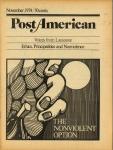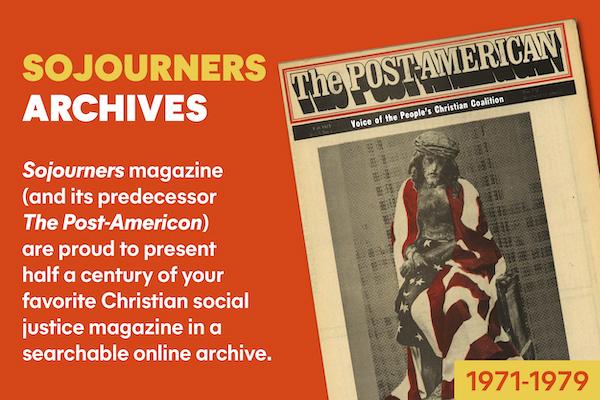This is the second of three essays on the “Christian radicalism” of early
“Oberlinism” was a complex ideology. The college was first and foremost a “
But Oberlin would have nothing to do with Christian faith unrelated to reform and boasted that “
Oberlin’s great issue was, of course, the anti-slavery struggle. Soon after the students began to arrive, they founded the Oberlin Anti-Slavery Society, whose 230 members pledged themselves to work for the “immediate emancipation of the whole colored race.” Oberlin provided at least sixteen of the famous “Seventy” sent out as agents of the American Anti-Slavery Society (at least nineteen of the “Seventy” had been “Lane Rebels”). These and other Oberlin lecturers and organizers often suffered mob violence and other forms of abuse.
The peace movement also found support at Oberlin. Here, though, opinion was not uniform. First into the fray in 1840 was the Oberlin Non-Resistance Society which espoused the radical position that renounced all use of force. More typical of Oberlin’s stance was the Oberlin Peace Society founded in 1843. This group allowed that war might in some cases be just—though it took several weeks of debate to establish this conclusion. But this position did not prevent intense peace activity (writing, lecturing, etc.). Nor did Oberlin hesitate to dissent from American war policy. The Oberlin Evangelist attacked President Polk for risking war with
Oberlinites were prominent in state and national anti-slavery organizations. Sermons and lectures on campus continually returned to this theme. Conviction was so strong on the subject that most residents of Oberlin found the Fourth of July to be a “cruel mockery” (in that it celebrated only the freedom of the white race) and preferred instead to honor the “First of August” (the anniversary of emancipation in the British West Indies). Nor did such concerns stop upon graduation. Graduates of Oberlin fanned out over the country to work among the black race, especially in the founding of schools.
Oberlin was committed to making the whole Christian Church in effect an “anti-slavery society.” The means was “moral suasion” or the use of Finney’s “new measure revival techniques.” The
Oberlin also made contributions to the women’s movement, though it resisted much of the “women’s rights” crusade. It was the first coeducational college, a step that met much resistance. (Even reformer Lyman Beecher said that “this Amalgamation of the sexes won’t do. If you live in a Powder House, you blow up once in a while.”) But opinion divided on whether women should speak in public, even though Finney’s revival techniques had been a major influence in opening up this possibility. Mahan supported the women, especially as his own daughter neared the time for her “commencement essay,” but was unable to carry a majority of the faculty. Antoinette Brown, the first woman to be ordained, was permitted to attend theological lectures only “unofficially.” But she did attend and did complete a theological education. And the education that Oberlin provided laid the foundation for moving beyond Oberlin’s position. Oberlin graduated some of the most radical feminists of the era. Among them were Lucy Stone (whose name became the household expression for a woman who kept her maiden name in marriage) and Betsy Cowles (president of the 2nd National Women’s Rights Convention).
An interesting sidelight in this story was Oberlin’s commitment to “physiological reform.” The institution was deeply influenced by the philosophy of the “manual labor schools” which insisted that students engage in daily manual labor (usually four hours a day) to support themselves, to maintain appreciation for physical labor, but primarily for the sake of the benefits to health. Oberlin was deeply into all facets of the “health movement” of the age. Shipherd, Steward, Mahan, and Finney were all disciples of Sylvester Graham (inventor of the “Graham Cracker”—the health food of that period). Graham’s teaching involved not only total abstinence from all alcoholic beverages, but also “tobacco, tea, coffee, and all other stimulants,” as well as “pepper, mustard, oil, vinegar, etc.” Oberlinites were for the most part vegetarian. Almost all sweets were outlawed.
Oberlin was also in the vanguard of educational reform. Shipherd consulted educational reformers in developing the plans for the new school. Oberlin placed major emphasis on preparing teachers for the new “common schools” for the education of the masses. (Horace Mann had effected the founding of the first state supported “normal school” only in 1839.) In the 1840s new courses in “teaching methods” were developed. Oberlinites usually advocated a form of “progressive education” that governed by “moral principles, instead of the rod and the rule.” Oberlin also pioneered in the introduction of agricultural education, business education, and the teaching of music.
Oberlin political stances were also progressive. The early members of Oberlin Colony had been conservative Whigs, but their antislavery sentiments pushed them in another direction—toward the “Liberty Party,” an “abolitionist” third party, and later into the antislavery Republican Party. The Oberlin Evangelist in 1856 called for support for “Free Press, Free Speech, Free Men,
But one of the most offensive aspects of “Oberlinism” was its advocacy of a doctrine of “civil disobedience” defended by appeal to the “Higher” or “Divine Law.” Abolitionists had to face the question of the extent to which they could go in defending slaves and helping them to liberty. Oberlin soon began to push the legal limits. Some students even crossed over into the South to free slaves. George Thompson served five years in a
But it was the “Underground Railroad” that really began to raise the questions of “civil disobedience” for Oberlin. Hundreds of escaped slaves passed through Oberlin, one of the most important stations on the “Underground Railroad” to
Such actions were, of course, a direct violation of the “Fugitive Slave Laws” that required the return of escaped slaves to their owners in the South. Oberlin was particularly offended by the federal “Fugitive Slave Law of 1850.” Finney insisted on calling it the “Fugitive Slave Bill” even after it was passed, arguing that nothing so opposed to the Divine Will and the United States Constitution should ever be called a “law.” The campus began to struggle with the issues. During the early 1850s the literary societies debated such propositions as “Ought Christians to obey the new Fugitive Law?”; “Ought a functionary of the government either to execute a law which in his opinion conflicts with the divine law or else resign his office?”; “Ought we to resist by violence the execution of the Fugitive Slave Law?”; and “Does the injustice of a law free the citizens of the U.S. from the moral obligation to obey it?” In 1858 Oberlin had the chance to test these theories in practice. The result was the notorious “Oberlin-Wellington Rescue Case” that gained for Oberlin’s reform impulse a worldwide reputation.
To be continued. A third article on the “Christian Radicalism” of early
For further reading:
James H. Fairchild, Oberlin: The College and the Colony 1833-1883 (Oberlin: E.J. Goodrich, 1883).
Robert S. Fletcher, A History of Oberlin College from its Foundation Through the Civil War, 2 vols. (Oberlin: Oberlin Collage, 1943). This set was reprinted by “Books for Libraries.”
Edward H. Madden, Civil Disobedience and Moral Law in Nineteenth-Century American Philosophy (Seattle: University of Washington Press, 1968). Also available in paperback edition.
For the rest of the series, see below:
Recovering a Heritage, Part I:
Recovering a Heritage, Part II: Evangelical Feminism, by Donald W. Dayton and Lucille Sider
Recovering a Heritage, Part III: The Lane Rebellion and the Founding of
Recovering a Heritage, Part IV: The "Christian Radicalism" of
Recovering a Heritage, Part V: The Rescue Case, by Donald W. Dayton. December 1974.
Recovering a Heritage, Part VI:
Recovering a Heritage, Part VII: The Sermons of Luther Lee, by Donald Dayton. February 1975.
Recovering a Heritage, Part VIII: Theodore Weld, evangelical reformer, by Donald W. Dayton. March 1975.
Recovering a Heritage, Part IX: The Tappan Brothers: businessmen and reform, by Donald Dayton. April 1975.
Recovering a Heritage, Part X, by Donald Dayton. May 1975.

Got something to say about what you're reading? We value your feedback!
